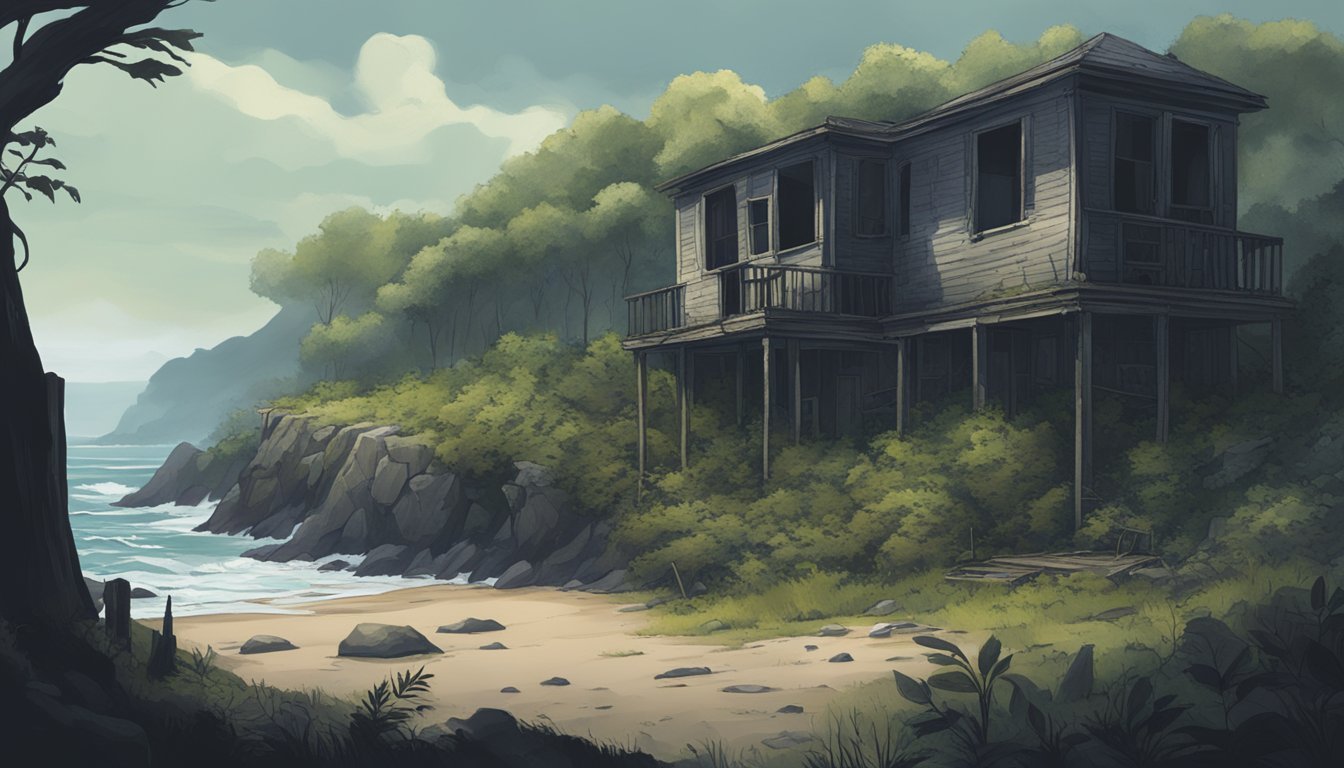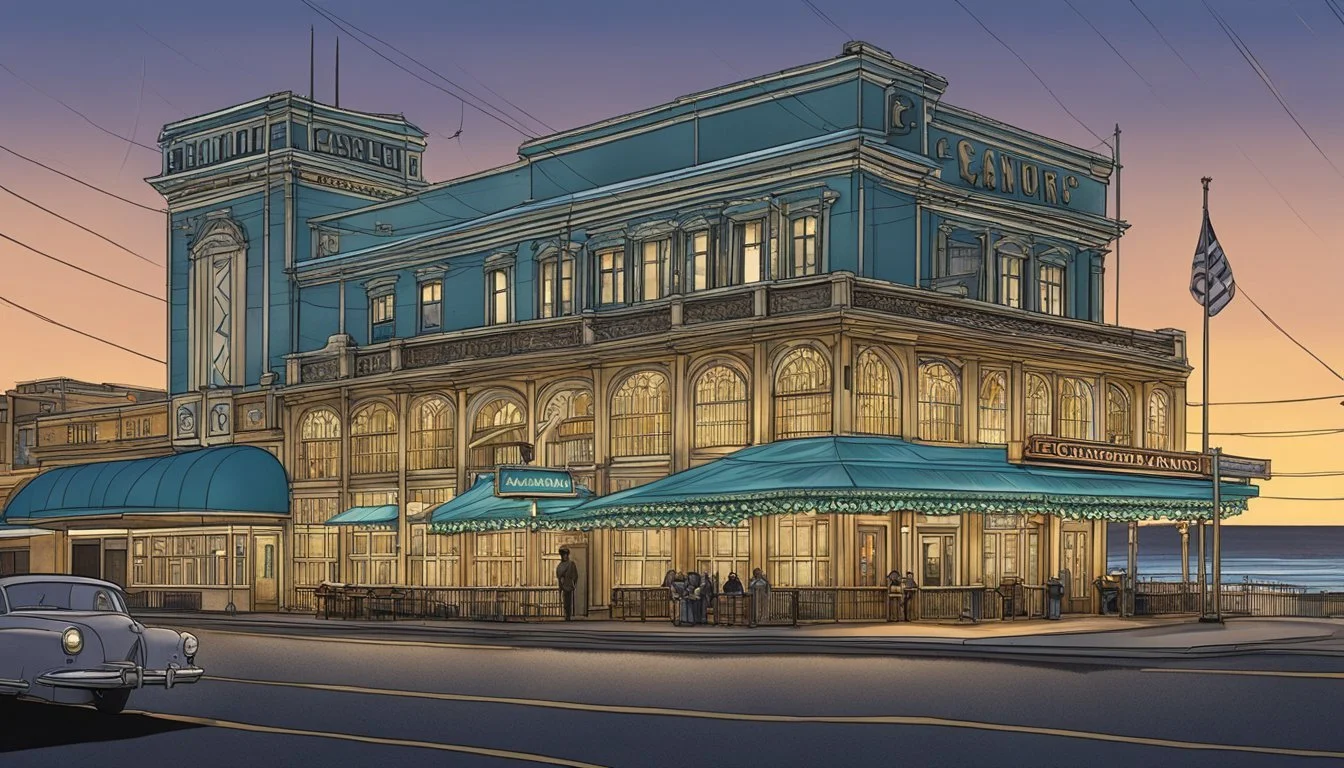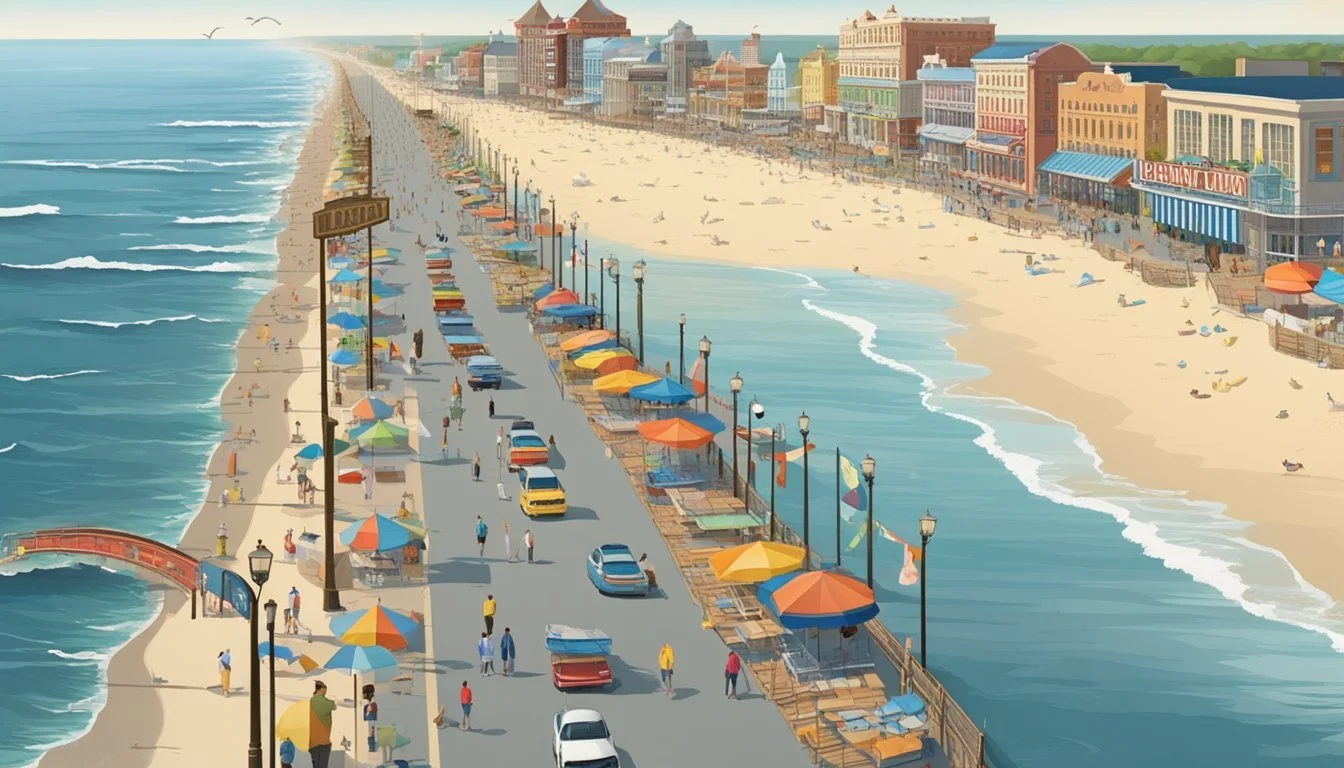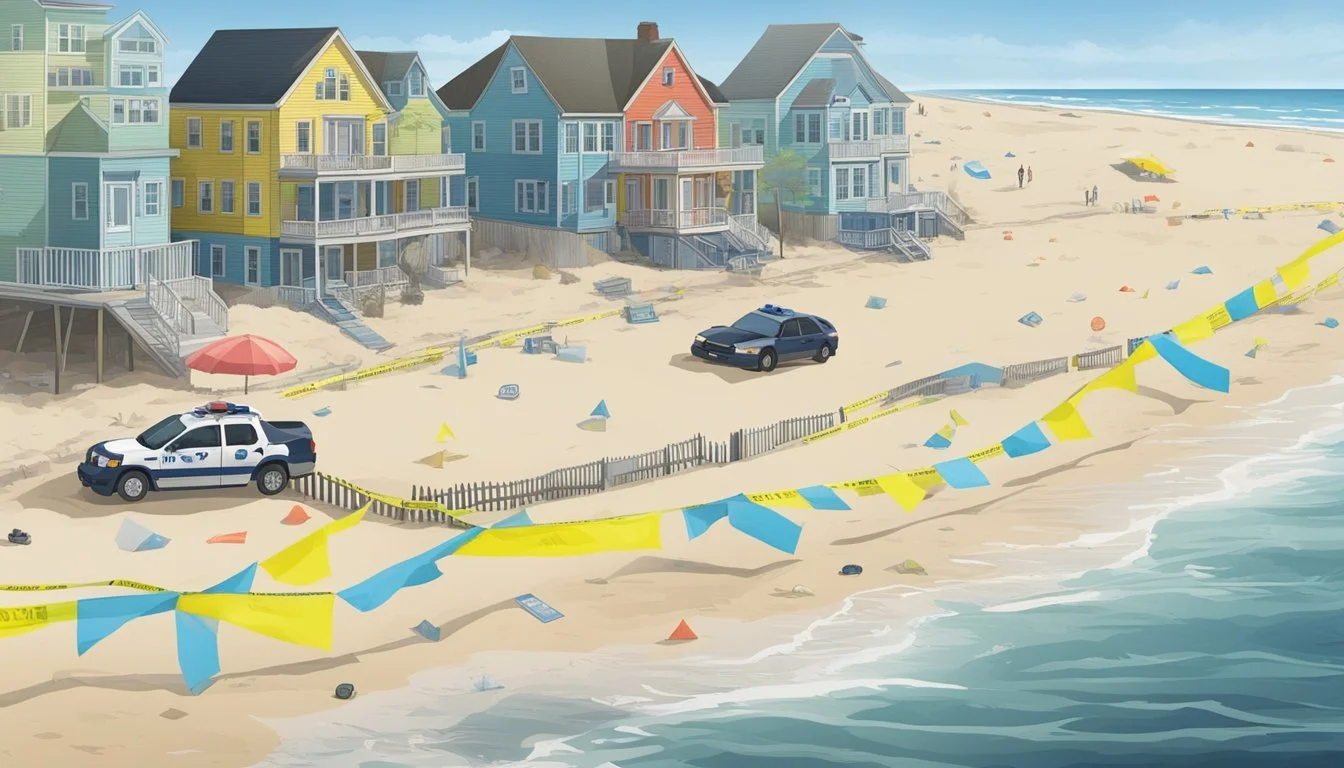Richard Biegenwald: 6 New Jersey Shore Locations Linked to the Thrill Killer's Crimes
Mapping the Murderer's Trail
Richard Biegenwald terrorized the Jersey Shore area in the late 20th century, earning the nickname "Thrill Killer" for his brutal crimes. Between 1958 and 1983, he murdered at least six people in Monmouth County, New Jersey, leaving a trail of fear and devastation in his wake.
The locations associated with Biegenwald's crimes offer a chilling glimpse into the dark underbelly of a popular vacation destination. From the streets of Asbury Park to the quiet neighborhoods of Ocean Township, these six sites serve as grim reminders of the serial killer's reign of terror. Each location tells a part of Biegenwald's story and the impact his actions had on the local community.
1) Asbury Park Casino
The Asbury Park Casino, a historic landmark on the Jersey Shore, played a role in Richard Biegenwald's criminal activities. This once-grand entertainment complex became a backdrop for some of the Thrill Killer's nefarious deeds.
In the early 1980s, the abandoned and decaying structure attracted vagrants and criminals. Biegenwald reportedly frequented the area, using its secluded spaces for illicit activities.
Law enforcement suspected the casino grounds as a potential dumping site for Biegenwald's victims. However, no conclusive evidence was found linking any murders directly to this location.
The casino's deteriorating state and isolation made it an ideal spot for criminal elements. Its connection to Biegenwald's case highlighted the need for better security and maintenance of abandoned properties.
Today, the Asbury Park Casino serves as a somber reminder of a dark chapter in the area's history. It stands as one of several locations associated with the infamous Jersey Shore serial killer.
2) Long Branch Pier
The Long Branch Pier played a significant role in Richard Biegenwald's criminal activities. This popular Jersey Shore landmark became the site of one of his most notorious murders.
On August 27, 1982, Biegenwald encountered 18-year-old Anna Olesiewicz near the pier. The young woman from Camden had been enjoying a night out with friends when she crossed paths with the killer.
Biegenwald lured Olesiewicz away from the bustling pier area. He then brutally murdered her, showing the callousness that had become his trademark.
The victim's body was later discovered in Ocean Township, several miles from the Long Branch Pier. This tragic event sent shockwaves through the local community and intensified the search for the elusive killer.
The Long Branch Pier murder highlighted Biegenwald's pattern of targeting young women in public places. It also demonstrated his ability to operate in crowded areas without detection.
3) Atlantic City's Boardwalk
Richard Biegenwald's crimes extended beyond Monmouth County to the iconic Atlantic City Boardwalk. This famous stretch of wooden planks became an unwitting backdrop to his sinister activities.
In the late 1970s and early 1980s, Biegenwald frequented the bustling boardwalk. He used the crowded tourist destination as a hunting ground, blending in with the throngs of visitors.
The boardwalk's vibrant atmosphere and constant flow of people made it an ideal location for Biegenwald to scout for potential victims. He often targeted young women who were alone or appeared vulnerable.
Law enforcement later discovered that Biegenwald had lured at least one victim from the boardwalk. This revelation sent shockwaves through the community and cast a dark shadow over the popular attraction.
The Atlantic City Boardwalk case highlighted the far-reaching nature of Biegenwald's crimes. It demonstrated that his murderous activities were not confined to a single area but spread across multiple locations in New Jersey.
4) Ocean Grove Beach
Ocean Grove Beach played a significant role in Richard Biegenwald's criminal activities. This popular seaside destination in New Jersey became linked to the notorious "Thrill Killer" through one of his victims.
In August 1982, the body of 17-year-old Maria Ciallella was discovered near Ocean Grove Beach. Biegenwald had abducted and murdered the young woman, leaving her remains in a wooded area close to the shoreline.
The discovery of Ciallella's body intensified the investigation into the string of disappearances and murders along the Jersey Shore. Ocean Grove Beach, once known for its tranquil atmosphere, became associated with the dark legacy of Biegenwald's crimes.
Law enforcement increased their presence in the area following this grim discovery. The incident served as a stark reminder of the danger that lurked beneath the surface of the seemingly idyllic coastal community.
Ocean Grove Beach's connection to the Biegenwald case underscored the widespread impact of his crimes across various locations in Monmouth County. The seaside town joined other Jersey Shore communities in grappling with the aftermath of the serial killer's actions.
5) Seaside Heights Amusement Park
Seaside Heights Amusement Park, located on the iconic New Jersey Shore boardwalk, played a role in the Richard Biegenwald case. The popular attraction drew large crowds, providing potential victims for the serial killer.
Biegenwald frequented the area, blending in with tourists and locals alike. He used the bustling atmosphere to his advantage, observing and selecting targets.
The park's bright lights and noisy rides created an environment where people let their guard down. This made it easier for Biegenwald to approach and lure unsuspecting individuals.
Casino Pier, a prominent feature of the amusement park, extends into the Atlantic Ocean. It offered Biegenwald numerous opportunities to isolate victims away from the main crowd.
Law enforcement later traced some of Biegenwald's movements to the Seaside Heights area. This connection highlighted the park's unintended role in his criminal activities.
The case brought unwanted attention to the popular vacation destination. It served as a stark reminder that danger can lurk even in seemingly carefree places.
6) Point Pleasant Beach
Point Pleasant Beach played a role in Richard Biegenwald's criminal activities. This popular seaside resort town became an unexpected location in the serial killer's timeline of terror.
In 1981, Biegenwald abducted 17-year-old Maria Ciallella from Point Pleasant Beach. He lured the teenager into his car, promising her a ride home. Tragically, this encounter led to Ciallella's murder.
The disappearance of Ciallella from this bustling beach town shocked local residents. It highlighted the reach of Biegenwald's crimes beyond his usual haunts in Asbury Park and surrounding areas.
Point Pleasant Beach's connection to the case underscored the widespread nature of Biegenwald's activities along the Jersey Shore. The town's involvement in this dark chapter of New Jersey history serves as a somber reminder of the impact of his crimes on multiple communities.
The abduction from this popular vacation spot demonstrated Biegenwald's willingness to strike in various locations. It added to the fear and unease that gripped the region during his active years as the "Thrill Killer."
Background on Richard Biegenwald
Richard Biegenwald's troubled upbringing and early criminal activities shaped his path to becoming a notorious serial killer. His psychological profile and prior offenses provide insight into the events that led to his Shore crimes.
Early Life and Psychological Profile
Born on August 24, 1940, Richard Fran Biegenwald endured a tumultuous childhood. He exhibited signs of antisocial behavior from a young age. At 5, Biegenwald set fire to his family's home, foreshadowing his later arson convictions.
His father's alcoholism and abusive tendencies contributed to a unstable home environment. By age 8, Biegenwald was drinking alcohol and smoking. He spent time in psychiatric institutions as a youth, where doctors diagnosed him with schizophrenia.
Biegenwald's early experiences likely played a role in shaping his violent tendencies and lack of empathy for others. These traits would ultimately fuel his criminal activities in adulthood.
Criminal History Prior to the Shore Crimes
Biegenwald's criminal record began in his teenage years. At 18, he committed his first murder, shooting a store owner during a robbery in 1958. This crime resulted in a life sentence.
After serving 17 years, Biegenwald was paroled in 1975. He quickly returned to criminal activities, including burglary and arson. In 1980, he faced attempted rape charges, but avoided conviction due to a clever legal maneuver by his attorney.
These early crimes demonstrate Biegenwald's escalating pattern of violence and disregard for the law. His release from prison set the stage for the series of murders he would commit along the New Jersey Shore in the early 1980s.
Crime Scenes at New Jersey Shore Locations
Richard Biegenwald's crimes left a chilling mark on several New Jersey shore locations. These sites became focal points for investigators and continue to hold historical significance in the case.
Detailed Descriptions of Each Site
Asbury Park served as a key location in Biegenwald's crime spree. He frequented local bars and targeted victims in this bustling shore town. Ocean Township also featured prominently, with Biegenwald living there during part of his killing spree.
Neptune City was another significant site. Biegenwald committed one of his murders in this small coastal community, shocking local residents.
Long Branch and Belmar were additional shore towns linked to Biegenwald's activities. These popular beach destinations became scenes of grim discoveries as bodies were found in secluded areas.
Evidence Found
Investigators uncovered crucial evidence at various crime scenes. In Asbury Park, they found personal items belonging to victims, helping to link Biegenwald to the murders.
At the Ocean Township residence, police discovered a cache of incriminating materials. These included:
Victim's jewelry
Clothing items
Photographs of potential targets
In Neptune City, forensic teams collected DNA evidence that proved vital in building the case against Biegenwald.
Long Branch and Belmar yielded physical evidence such as fibers and hair samples. These were meticulously analyzed to establish connections between Biegenwald and his victims.
Impact on the Local Communities
Richard Biegenwald's crimes deeply affected New Jersey shore communities. His murders sparked fear and changed local attitudes towards safety and security.
Public Reactions and Media Coverage
Biegenwald's killing spree gripped the Jersey Shore with terror. Residents, especially young women, grew wary of going out alone. Local newspapers ran frequent updates on the investigation, keeping the community on edge.
Parents imposed stricter curfews on their children. Neighbors formed watch groups to patrol streets at night. Tourism suffered as visitors avoided the area, fearing for their safety.
The media dubbed Biegenwald the "Thrill Killer," sensationalizing his crimes. This heightened public anxiety and led to widespread mistrust of strangers in the normally welcoming beach towns.
Changes in Local Policies and Security Measures
Law enforcement agencies stepped up patrols in response to Biegenwald's murders. Police presence increased significantly in popular nightlife areas and along beaches.
Local businesses implemented new safety protocols:
Improved lighting in parking lots and alleyways
Security cameras installed in high-traffic areas
Buddy systems for employees leaving work late
Schools and community centers held safety awareness programs. They taught residents how to recognize suspicious behavior and protect themselves from potential threats.
Legislators pushed for stricter parole regulations to prevent early release of violent offenders. This was a direct response to Biegenwald's history of prior convictions and early releases.









